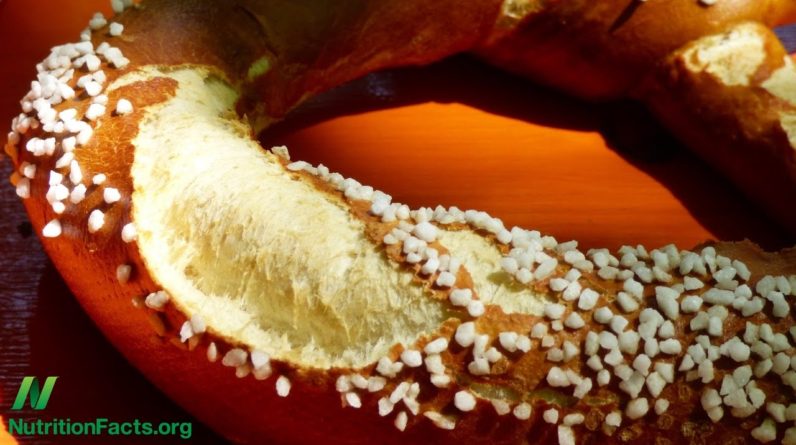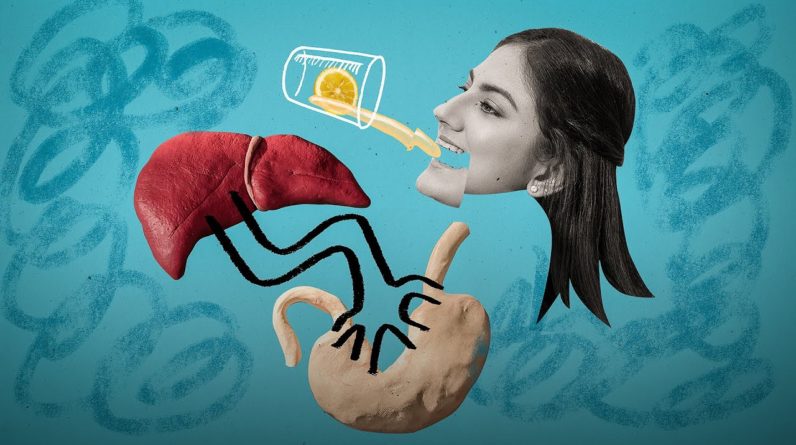
This episode is brought to you by the new
podcast, "The Thread" with OZY. In July 1995, it became unusually hot in Chicago. The temperature hit 106 degrees, and the heat
index which is like wind chill – how it feels to people, was 126 degrees. As mayor Richard Daley eloquently put it:
“It’s hot, it’s hot out there! We all walk out there, It’s very very very
hot.” "It's so damn hot!" Eric Klinenberg, author Heat Wave: A Social
Autopsy of Disaster in Chicago explains that Roads were buckling under the heat, and drawbridges
had to be hosed down to close properly.
This led to huge traffic jams; The city even
had to hose down hot school buses and provide the kids with bottled water in an attempt
to cool them down. Over 700 heat related deaths were logged in
as little as 5 days. While this was a difficult time for everyone,
most of the victims were elderly people. Klinenberg points out that this is likely
due to their being more isolated, and less likely to open their windows for fear of crime,
even if they had no air conditioning. But what else makes the heat so dangerous
for the elderly? In 2003, the European heat wave led to the
hottest summer since at least 1540, leading to a death toll of more than 70,000 people.
Again, the elderly were hit especially hard. Now, as this report from the World Health
Organization Europe states: “As long as sweating is continuous, people can withstand
remarkably high temperatures, provided that water and sodium chloride, the most important
physiological constituents of sweat, are replaced.” So, if you are sweating a lot in the heat,
sodium preserving systems are very important in keeping you from losing dangerous amounts
of sodium. Well, these systems don’t work as well in
the elderly. As this section from a volume of QJM entitled
“Why do older patients die in a heatwave?” says: Older subjects have “diminished renal
tubular conservation of sodium and water during periods of dehydration.” Simply put, older people in general have a
harder time holding onto salt and are more at risk for hyponatremia – low blood sodium. Hyponatremia is associated with an increased
length of hospital stays, bone fractures, rhabdomyolysis and increased risk of death. In fact, Nursing home patients have a forty-three-fold
higher risk of being hospitalized with hyponatremia compared to patients in the community.
And of course, what is served in nursing homes
is “heart healthy” low sodium food. As I pointed out in my last video, the salt
and hypertension link doesn’t entirely make sense when you look at consumption trends. And, there seems to be a higher risk of mortality
from getting too little salt compared to getting too much. This study suggests that getting less than
3000mg of sodium causes a much higher risk of mortality compared to getting far more
than that. In fact, actually following the WHO low salt
guidelines of 2000mg would pose more of a health risk than getting 6 times that amount. So what about our physiology would make this
the case? The reason has to do with how the body reacts
to low levels of sodium. As is explained in “The Salt Fix” by Dr.
James DiNicolantonio, the body works very hard to conserve sodium when your intake is
low. Sodium is a key component in our cells ability
to function in general. Without sodium, your neurons won’t fire,
your muscles won’t contract and several important processes cannot occur. Normally people pee out a fair amount of sodium
daily.
However it has been found that when levels
are low enough, the kidneys refuse to release any sodium into the urine. When there is less sodium, the body increases
activity in the renin-angiotensin-aldosterone system or the RAAS. This system begins with your liver releasing
angiotensinogen, and, after a series of steps that you can read about in an endocrinology
textbook, angiotensin I is produced. Angiotensin-converting enzyme (ACE) then converts
it into angiotensin II, which stimulates the adrenal glands to produce aldosterone. Aldosterone is important because its job is
to hold on to sodium by conserving it not only in the kidney, but also in the salivary
glands, sweat glands and colon. Aldosterone has it’s purpose, but it’s
not a hormone you want to regularly have high levels of. High aldosterone is associated with increased
inflammation, Chronic kidney disease, Osteoporosis, and cardiovascular disease. In particular it’s implicated in oxidative
stress and myocardial fibrosis – an abnormal thickening of the heart valves. One more thing: Aldosterone secretion, combined
with blood vessel constriction due to impairment of nitric oxide synthesis – another consequence
of this renin-angiotensin aldosterone system, increases blood pressure.
And, this blood pressure raising effect of
the RAA system is well known – a common medication given to people with high blood pressure is
something called an ACE Inhibitor. These drugs inhibit Angiotensin Converting
Enzyme, hindering an important step in the RAA system resulting in lower aldosterone
and lower blood pressure. But, as I mentioned earlier, this renin angiotensin
aldosterone system is stimulated by low salt intake. As this study shows, a low salt diet increases
aldosterone by more than 3 fold in healthy people. Another study shows that when salt intake
drops below 1.5 teaspoons per day, a significant increase in renin and aldosterone occurs. Keep in mind that the WHO “strongly” recommends
getting no more than 2000 mg of sodium per day, which equates to less than one teaspoon
of salt. This suggests that people actually following
the WHO guidelines are chronically raising their aldosterone. So, how does the body react to higher levels
of salt? On the flip side of aldosterone, there is
a group of hormones called natriuretic hormones, i.e. sodium urinating hormones. These hormones are secreted when sodium intake
is increased.
As is discussed in Seldin and Giebisch’s
The Kidney, Fifth Edition, all 9 of the different Natriuretic Hormones discussed have therapeutic
effects ranging from improving kidney and heart function to preventing the growth of
cancers. One of these hormones called Atrial Natriuretic
Peptide, shows particular promise for promoting the health of blood vessels. In fact the therapeutic potential of this
peptide is significant enough that it has recently been approved in Japan to treat patients
with heart failure. So to sum all this up, you could inhibit the
blood pressure raising effects of the RAA system by taking a drug or you could get more
salt. And, you could take recombinant human Atrial
Natriuretic Peptide to improve heart function, or you could get more salt. Nonetheless, we’re recommended to restrict
our salt down to a single teaspoon a day to avoid heart disease? Now, I’m not saying you should consume as
much salt as you possibly can, as mentioned earlier, 11 grams of salt give or take seems
to be the optimal amount for most people. If you’re exercising and sweating a lot,
or you drink a lot of coffee or if you’re lowering your insulin via a low carb or ketogenic
diet, you may need more salt.
While it’s helpful to try and measure out
how much you’re getting per day, it’s usually easier to just follow your built in
salt intake regulator – Your sense of taste. Most runners will notice that after sweating
a lot during a long run, salty foods suddenly start to look really tasty. But When we think of salty foods, it’s unhealthy
foods – pretzels, potato chips, hot dogs, and processed foods. If you’re craving those foods, you may just
be craving their salt content. So, you should add as much high quality salt
as tastes good on your next meal, or you could eat something like pickled olives, or just
put a bit of salt and lemon in water and drink that.

Now, the advice “follow your craving”
might sound odd considering that’s usually bad advice. People can come to crave narcotics, alcohol
or sucrose. However, none of these substances are necessary
for life and the optimal intake is very likely zero. Also, the more you consume these substances,
the more you want them – in other words, it’s a positive feedback system. Salt on the other hand is a negative feedback
system – the desire for salt decreases as the sodium content of the body rises. This is why when you look at consumption trends,
salt has stayed steady the past 50 years and table sugar, which recently has been proven
to have addictive properties, continues to go up and up. Salt consumption used to be much higher because
salt had been the most effective food preservation technique at the time. When salt is freely accessible, people across
many populations tend to consistently consume between 3 and 4 grams of sodium per day. It seems that the body will push us to acquire
salt, but in accordance with our needs for the mineral. A 1986 paper titled “Taste changes during
pregnancy” shows pregnant women have a marked craving for salt.
As the paper says, “The data suggest that
a physiological mechanism for increasing salt intake may develop during pregnancy.” The paper even cites a case from 1691 where
“a pregnant woman consumed, by actual count, 1,400 salted herrings during her pregnancy.” And, A craving for salt is definitely something
pregnant mothers don’t want to ignore. A study published in the Lancet in 1958 of
more than two thousand pregnant women found that women on a low salt diet compared to
a high salt diet, caused more miscarriages, premature babies, stillbirths, edema and preeclampsia. Salt is important to fetuses and children
because it is required for optimal growth. A 1987 article titled “Sodium deprivation
growth failure in the rat” found that low sodium diets decreased bone and muscle mass
in rats. Another 1983 study found that low sodium left
rats with smaller brains.
But what about human studies? A study from the British Medical Journal concluded
that “…failure to provide [sufficient sodium to infants] may predispose to poor
neurodevelopmental outcome in the second decade of life.” Yet, the WHO guidelines specifically state
that the low salt recommendations apply to all individuals, including pregnant or lactating
women. So, if low sodium stresses the body, how did
the idea that lowering salt intake is good for blood pressure come up? As James DiNicolantonio points out in the
Salt Fix, blood pressure increase with a high salt intake can often be explained by a potassium
deficiency. Like sodium, potassium is also very important
for the function of your cells. For a while, Japan had been one of the strongest
arguments against salt. “Japanese people were known to eat lots
of salt, and while in general they had low rates of heart disease, they had a high rate
of cardiovascular conditions, such as stroke and hypertension.” Akita prefecture in specific had a high rate
of hypertension and did consume a lot of salt – which of course became the prime suspect.
Though researchers had already been pointing
to factors unrelated to salt such as “deficiencies in the dietary life,” vitamin C deficiency,
and the presence of cadmium in the intestines of widely eaten river fish. But, The Akita stroke rates were striking
when compared with Aomori prefecture, which is adjacent to Akita, and was also consuming
a high salt diet. The rate of death due to stroke was almost
half in Aomori. And, The average blood pressure in Aomori
was relatively low (131.4/78.6 ). What was happening here? This 1962 paper by Naosuke Sasaki found a
dose dependent relationship between daily apple intake and lowered blood pressure.
While the data only accounts for none, one
to two, or three apples per day, it shows that the more apples eaten, the lower the
blood pressure. And, Apples are good source of potassium. Dr. DiNicolantonio also shows that a similar
effect was seen in “Seventh-Day Adventist vegetarians, Seventh-Day Adventist omnivores,
and Mormon omnivores. The daily intake of sodium in these groups
was between 3,500 and 3,700 milligrams, slightly higher than what the average person in the
United States consumes.
However, the average blood pressure in the
three groups was totally normal. Importantly, the potassium intake was between
3,000 and 3,600 milligrams per day (almost twice as high as the average potassium intake
in America).” In my other video on Salt I brought up how
the average South Korean consumes at least twice as much sodium as the World Health Organization
recommends yet has the lowest rates of coronary heart disease in the world. A September 2015 paper showed how the quartile
groups that consumed the most sodium had the lowest rates of hypertension, coronary heart
disease and stroke. But you’ll also see that the potassium intake
in these groups rose along with the sodium intake, probably because a lot of their sodium
comes with vegetables, like in Kimchi. So did the increase in potassium or the increase
in sodium improve their health? Or did the increase in both have a positive
synergistic effect? In any case, increasing potassium intake is
assuredly a better strategy for health than restricting your sodium intake below 3000
milligrams.
So the advice to be gleaned from this is of
course to eat more vegetables. And, by making them taste better with salt,
you’ll be inclined to eat more of them. After all, the word salad comes from the name
of a delectable roman dish – herba salata. Salted Vegetables. So, I’m always trying to learn something
new from history as it’s interesting and can sometimes tie into the topics I talk about. I want to recommend a new podcast that explores
history’s surprising connections – it’s called The Thread with OZY. It’s like a cross between Malcom Gladwell’s
Revisionist History and six degrees of separation.
They show how various historical strands are
woven together to create a historic figure, a big idea or an unthinkable tragedy — like
how John Lennon’s murder was actually 63 years in the making. Other episodes are about J.D. Salinger, the
wife of Charlie Chaplin and more. The show is already topping the charts. Get The Thread with Ozy, that’s O-Z-Y, on
Apple Podcasts at ApplePodcasts.com/TheThread or wherever you listen..







